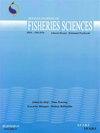Research Article: Molecular phylogeny of bivalve families (Arcidae, Chamidae, Margaritidae, Ostreidae, Veneridae) in the Persian Gulf
IF 0.6
4区 农林科学
Q3 FISHERIES
引用次数: 1
Abstract
Bivalvia is one of the least studied classes of the Persian Gulf. A survey and molecular analysis was conducted to determine bivalve species diversity in the Persian Gulf. To the best of our knowledge, this is the first report of barcoding data on bivalves of the Persian Gulf. We examined 40 individuals representing 8 species, 6 genera and 5 families. We collected samples from Hengam, Larak and Qeshm Islands and Bandar Lengeh in Persian Gulf, Iran. After DNA extraction, mitochondrial 16S ribosomal DNA (16SrDNA) and Cytochrome Oxidase subunit I were amplified by polymerase chain reaction (PCR). Based on obtained 16SrDNA and COI gene sequences and maximum parsimony, neighbor joining and maximum likelihood trees of these genes there was no overlap between maximum Kimura 2- parameter distance among conspecifics. Most species formed agglutinate sequence units with a small amount of changes. Eventually, comparison of the 8 selected studied species with metadata from India, Brazil, Japan, China, and America exposed that these species in Persian Gulf are classified in sister clades with high bootstraps except Pinctada. Since there is not much work on bivalves identification in the Persian Gulf, larger sampling and more research is needed to investigate mollusc diversity in this area.研究论文:波斯湾双壳类动物科(蜘蛛科、蜘蛛科、蜘蛛科、蜘蛛科)的分子系统发育
双壳纲是波斯湾研究最少的纲之一。为了确定波斯湾双壳类物种的多样性,进行了调查和分子分析。据我们所知,这是第一份关于波斯湾双壳类条形码数据的报告。我们检测了40个个体,代表5科6属8种。我们从伊朗波斯湾的亨加姆群岛、拉腊克群岛和凯什姆群岛以及冷杰港采集了样本。DNA提取后,用聚合酶链式反应(PCR)扩增线粒体16S核糖体DNA(16SrDNA)和细胞色素氧化酶亚基I。根据获得的16SrDNA和COI基因序列以及这些基因的最大简约性、相邻连接和最大似然树,同种之间的最大Kimura 2参数距离没有重叠。大多数物种形成了具有少量变化的凝集序列单元。最终,将所选的8个研究物种与来自印度、巴西、日本、中国和美国的元数据进行比较,发现波斯湾的这些物种被归类为姐妹分支,除平腹蛛外,其他物种都有很高的自主性。由于波斯湾的双壳类鉴定工作不多,因此需要更大规模的采样和更多的研究来调查该地区的软体动物多样性。
本文章由计算机程序翻译,如有差异,请以英文原文为准。
求助全文
约1分钟内获得全文
求助全文
来源期刊

Iranian Journal of Fisheries Sciences
FISHERIES-
CiteScore
2.30
自引率
11.10%
发文量
0
审稿时长
3 months
期刊介绍:
1- Living various species (contains animals and vegetal species) in various aquatic ecosystems.
2- Health and diseases of aquatic species.
3- Determining the stocks and specific time and location for catching and reliable exploitation for sustainable development.
4- Methods of propagation and culture of high value aquatic resources.
5- Aquatic stock assessment and the methods of restocking the high value species and suggestion for rate, areas and the time for releasing fish and other aquatic organisms fries.
6- Pollutant agents and their effects to the environments of aquatic species.
7- Feed and feeding in aquatic organisms.
8- Fish processing and producing new products.
9- The economic and social aspects of fisheries.
 求助内容:
求助内容: 应助结果提醒方式:
应助结果提醒方式:


